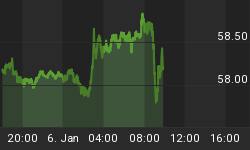Bank of America’s customers have been duped into thinking that their stock trades were being done in-house when in reality they were being redirected to third parties, leading to a $42-million penalty for the banking giant over fraudulent practices.
Not only was Bank of America purposefully misleading its customers, but it had been doing it for five years, according to New York Attorney General Eric Schneiderman.
Bank of America Merrill Lynch came clean over the charges on Friday, admitting to the systematic misleading of clients over their stock buys and concealing agreements with five outside companies to handle trades.
The five-year scheme, said Schneiderman, was an attempt to make the bank’s trading services appear sophisticated, when in reality, they had to close side deals for trading houses that took client money outside the bank without their knowledge.
The fraud settlement stems from Bank of America’s Instinct X ‘dark pool’ and how much of that pool was coming from retail investors. Dark pools are off-exchange trading venues where bigger investors can buy and sell large amounts without tipping off the market.
In trying to sell its sophisticated trading services to investors, Bank of America said its retail investors could handle up to 30 percent of trades, when the truth was closer to 5 percent.
And they hid this from investors by reprogramming their trading system to ensure that confirmation messages sent directly from the bank to clients even though outside providers were executing the orders.
The Attorney General called it “masking”; and said that 16 million client trade orders between 2008 and 2013 were completed in this fraudulent manner. Related: Could Africa Adopt A Single Digital Currency?
"Bank of America Merrill Lynch went to astonishing lengths to defraud its own institutional clients about who was seeing and filling their orders, who was trading in its dark pool, and the capabilities of its electronic trading services," the attorney general said in a statement.
Now faced with a $42-million settlement penalty, Bank of America isn’t exactly apologetic. In a statement published by CNBC, it played the ‘old news’ card, saying that the settlement is for actions that took place “as long as 10 years ago”, carefully avoiding the fact that it extended into 2013.
“At all times we met our obligation to deliver the best prices to clients. About five years ago, we addressed the issues concerning communicating to clients about where their trades were executed,” the statement read.
It was the fourth such incident of trade abuse resulting in a penalty in two years. Credit Suisse ($30 million), Barclays ($35 million) and Deutsche Bank ($18.5 million) were forced into settlements over similar issues two years ago. Credit Suisse neither admitted nor denied any wrongdoing in the case, but the Barclays settlement deal came along with an admission of violating federal securities laws.
But it’s also not the first time Bank of America has been fined for violations. Since the 2008 financial crisis, it’s paid $76 billion in fines.
In total, banks have been fined $243 billion since the financial crisis, according to a list compiled in late February by Keefe, Bruyette and Woods. JPMorgan Chase features second on the list, with nearly $44 billion in fines.
By Fred Dunkley for Safehaven.com
More Top Reads From Safehaven.com:


















Then I noticed homeowners claimed receiving missing/ altered documentation they specifically addressed in complaints. Victims won't reveal all their issues & evidence to banks when anticipating litigation, but they will give everything to regulators in hopes of help. The CFPB forwarded complaints/ evidence to the banks, to give them heads up. The banks used it to fix /fabricate whatever needed to gain unfair advantages & over come allegations. But why would regulators do that?
Turns out both banks and regulators are under the same Federal Reserve umbrella. And while banks were being pummeled with numerous regulatory orders and record fines, I couldn't figure out why none of it worked to deter their habitual misconduct. It finally occured that besides paying with victim & shareholder money, being under the same umbrella means taking money from one pocket & essentially putting it in the other. The fines were just for show, hence, victims receiving 0 of $243 Billion.